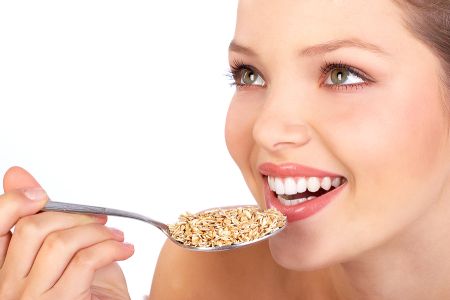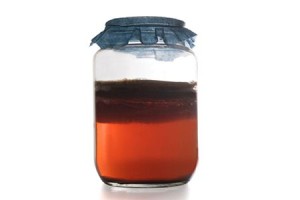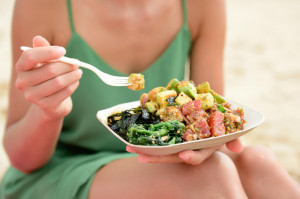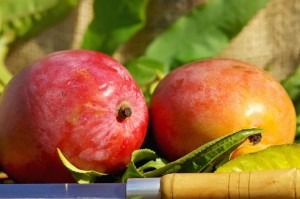Anyone who has tried to diet knows the all-day feeling of hunger that threatens long-term success: you might be good for a couple of hours, days, weeks, even months, then bad habits creep back in, you binge, and you’re back to square one – or square minus one, because you’ve probably gained more than you lost and threatened your well-being in the process. Here we explain how you can stay fuller for longer by eating more of the right foods.
Many studies conducted around the world claim that one of the reasons for the failure of the diets is because of hunger and satiety mechanisms in the brain. These mechanisms are influenced by both – and often interrelated – physiological and psychological factors.
Physiological factors include hunger hormones such as ghrelin, and satiety hormones such as leptin. When the brain receives hormonal hunger signals, we feel hungry and crave food. When we have had enough food, these signals stop, and are replaced by satiety hormonal signals, which serve to stop food-seeking behavior. Ghrelin and leptin often determine the success – or failure – of the process of slimming and maintaining lost weight.

Learn more about these hormones in our presentation.
Psychological factors are related to our mental state and response to the stimuli around us. We often eat when bored, in a bad mood, anxious, or depressed, and sometimes even when we’re happy and excited about something. Equally we often eat in the room when the scents of enticing foods, when the table a large selection of dishes, when we see a television advertisement to eat. The more and the longer we feel depleted, the more we crave energy-dense foods, high in fats and simple sugars.
One of the strategies to fight the feeling of hunger while dieting is to favor foods that delay secretion of the pro-hunger hormone while encouraging secretion of the pro-satiety hormone. In other words, foods that on the one hand are healthy and light, and on the other, will keep you feeling full longer.
Below is a list of food and meal features that may help reduce hunger and increase satiety:
Fiber is Filling
Both soluble and insoluble dietary fiber have been linked to improved appetite control.
Soluble fiber to intake was shown to result in decreased secretion of the hunger hormone ghrelin and consequently, reduction in the amount of food eaten at subsequent meals. This has been attributed to both the physical properties of the fiber in the stomach – as they absorb water, they expand in the stomach – as well as a beneficial effect on blood sugar levels, particularly by slowing of carbohydrate absorption into the blood. Soluble fiber found in fruits, oat bran, beans, barley, Jerusalem artichokes (sunchokes), asparagus, chicory root, and other root vegetables.
Insoluble fibers increase the act of chewing, thus contributing to increased levels of the satiety hormone leptin. They also reduce the absorption of some dietary components in the small intestine, thus reducing the amount of dietary energy (calories). They also aid bowel action and prevent constipation. Insoluble fibers come from the shells of grains, seeds, and some vegetables. Chewing also slows down eating, which gives the stomach time to send signals to the brain that it is full, thus enabling satiety to kick in before too much has been consumed.
Protein Makes Perfect
A protein-rich diet can cause a significant increase in the feeling of fullness, and is considered a great ally in a slimming diet. Some believe that it is part of the explanation for the success of low-carbohydrate diets. Eggs especially have been observed to promote satiety, particularly if eaten at breakfast.
Mechanisms by which proteins create a feeling of fullness are not clear, but include two central possibilities. One is the increase in the concentration of acids, which in turn causes an increase in satiety hormones and decrease in appetite. The other is that proteins buffer the effects of dietary carbohydrates, thereby tempering blood sugar and insulin spikes and drops that cause hunger unrelated to need.
Protein-rich foods include legumes, nuts, seeds, mushrooms, and some grains and vegetables, as well as meat, poultry, seafood, eggs, and low-fat dairy.
Low-Calorie, High-Volume = Low-Appetite, High-Satiety
It is increasingly accepted that volume is key to satiety, perhaps even more so than calorie density. While hormonal response to adequate nutrients is key, the response to stretching of the stomach is just as important.
Several studies have found that eating dishes – large of foods low in calorie density at the beginning of the meal, reduces calorie intake later in the meal. One study found that subjects who ate a large salad (about 2 cups, 10 oz, or 300 g) at the beginning of the meal, eat fewer calories later in the meal, compared with those who did not eat salad.
Another study found that subjects who ate different kinds of vegetable soup at the beginning of lunch, significantly reduced the amount of calories they consumed later in the meal, compared with those who ate soup.
When It Comes to Carbs, Keep it Complex
Simple or fast carbohydrates – also known as sugars – are high in refined and sweetened foods, including regular sweetened beverages, cakes, and white bread and pastas. These leave the stomach very quickly and lead to blood sugar spikes and drops, whetting the appetite and causing the consumption of excess calories. In contrast, complex or slow carbohydrates – found in whole starch foods – leave the body gradually (also known as slowed transit time), which slows the secretion of pro-appetite hormones. These are found in starchy high-fiber whole-grains and their products, nuts and seeds, legumes, fruits, and vegetables.
Drink (and Eat) to Success
Drinking water before meals, and at dinner, has been shown to contribute to a feeling of fullness. Consuming foods with high water content – fresh salads and other vegetables, fruits, or soup – has been linked to an even greater effect.
Fired Not Fried
In addition to cooking – meaning steaming, boiling, sautéing, braising – baking – including grilling, broiling, roasting – is consistently recommended over frying in large amounts of oil, in general and especially in weight management. One of the reasons is that the energy density is much higher, which ironically means satiety is lower, with hunger soon to follow. Another is that frying results in damage to the oil, which generates systemic inflammation – linked to weight gain, especially in the high-risk belly area. In contrast, baking types of heating allow for fats to drip off, and cooking means higher water content, which reduces energy density and increases satiety without the disadvantages.
Like it Hot
Hot food has been shown to increase satiety compared to cold. For example, eating cold raw vegetables may be less satiating for the same amount of hot cooked vegetables. Further, a hot drink such as tea or coffee reduces the feeling of hunger, and especially the need for sweets. Slow sipping throughout the day on a hot beverage known to accelerate weight loss and boost health such as green tea can produce a triple whammy for weight loss.
Not being hindered by hunger creates a huge advantage in weight management. Satiety may not become second nature overnight, but these techniques can guide you and eventually put you on the winning side of willpower.
References
Rebello CJ, Liu AG, Greenway FL, Dhurandhar NV. Dietary strategies to increase satiety. Adv Food Nutr Res. 2013;69:105-82.
Rebello CJ, Johnson WD, Martin CK, Xie W, O’Shea M, Kurilich A, Bordenave N, Andler S, van Klinken BJ, Chu YF, Greenway FL. Acute effect of oatmeal on subjective measures of appetite and satiety compared to a ready-to-eat breakfast cereal: a randomized crossover trial. J Am Coll Nutr. 2013;32(4):272-279.
Forde CG, van Kuijk N, Thaler T, de Graaf C, Martin N. Oral processing characteristics of solid savoury meal components, and relationship with food composition, sensory attributes and expected satiation. Appetite. 2013 Jan;60(1):208-19.
Carter BE, Drewnowski A. Beverages containing soluble fiber, caffeine, and green tea catechins suppress hunger and lead to less energy consumption at the next meal. Appetite. 2012 Dec;59(3):755-761.
Kristensen M, Jensen MG. Dietary fibres in the regulation of appetite and food intake. Importance of viscosity. Appetite. 2011 Feb;56(1):65-70.
Lattimer JM, Haub MD. Effects of dietary fiber and its components on metabolic health. Nutrients 2010, 2, 1266-1289. http://www.mdpi.com/2072-6643/2/12
Das UN. Obesity: genes, brain, gut, and environment. Nutrition. 2010 May;26(5):459-73.
Schroeder N, Gallaher DD, Arndt EA, Marquart L. Influence of whole grain barley, whole grain wheat, and refined rice-based foods on short-term satiety and energy intake. Appetite. 2009 Dec;53(3):363-9.
Vander Wal JS, Marth JM, Khosla P, Jen KL, Dhurandhar NV. Short-term effect of eggs on satiety in overweight and obese subjects. J Am Coll Nutr. 2005 Dec;24(6):510-5.
Rolls BJ, Roe LS, Meengs JS. Salad and satiety: energy density and portion size of a first-course salad affect energy intake at lunch. J Am Diet Assoc. 2004;104:1570-1576.
Rolls BJ, Bell EA, Thorwart ML. Water incorporated into a food but not served with a food decreases energy intake in lean women. Am J Clin Nutr. 1999;70:448-455.




Hello, I am new to this healthy eating…my question is …Can we have sourdough bread? If so, under what conditions? I know it has no whole grains but I had read that because of the sourdough, the bread enters the bloodstream more slowly than other non-whole wheat bread. I usually would have it with a little real mayonnaise and 1-2 ounces of deli meat. thank you!
Hi, Holly, and welcome! Yes, sourdough bread is wonderful – and there are whole grain types available, which we would encourage you to choose.
Hi, Katie, and welcome! Click on the “Exchange View” icon in the toolbar above your finished menu to see the meal patterns. The exchanges correspond to these lists: https://www.trimdownclub.com/exchanges-lists.
Hello I just joined TDC and am very excited to get started. I’ve always struggled to eat healthy snacks to keep me going through the day (meal times aren’t as bad). However the snacks on my food planner aren’t really what I thought they would be. I’m going to try a few more menus but in the meantime is there somewhere I can find the information on what amount and sorts of protein, carbs and fat I need to eat together like a list I can pick from so I can plan my own snacks? I’ve had a little look but was wondering if you could direct me to save me some time. Thanks
Good morning. I joined TDC club last week I & am soo glad I did. I find all the information & advise on a healthy way of eating very helpful. It is exactly what I needed because I had become confused about what foods are good for you. Loosing weight will be a bonus. It’s taking me a while to get into it all but that’s just me.
Hi, CookingLady. The cooking oils we recommend are those high in monounsaturated fats, such as olive, organic rapeseed (canola), almond, hazelnut, avocado, and macadamia nut. Beyond that, it largely depends largely on the flavor you like. You can read a little more in-depth here: https://www.trimdownclub.com/all-about-oil/.
What is the oil you should use if sautéing a food?
Hi, TraceyAlcorn, and welcome. A good amount of exercise is about 40-60 minutes a day, preferably divided up into 2 sessions per day. If you’re not currently active, you can gradually work up to this. As for weekly weight loss, that is very individual. It depends on your genetics, past diet history, and of course, how much you are able to follow the plan and exercise.
I have just started program and was wondering what is a good amount of exercise and what can I expect weight wise per week basis?
Hi, Robinson1970. If you have movement limitations, it may indeed be an option to cut back on portions. Just be sure to get at least 5 total servings of fruits+vegetables and 3 servings of calcium-rich foods each day.
For people who have been on deprivation diets in the past, it may take a while for the body to get used to normal amounts of food again. The usual way to deal with this is to make adjustments in physical activity. Some of our members are in a similar situation that you describe, and we work with them one-on-one to find solutions. If you are interested, please do join the Fitness form in the Community area.
I have been a member for three weeks now and have exercise limitations. I am having trouble eating all the food that’s required and have actually gained almost 2 pounds since starting the program. I am going to lessen the amount of foods this week to see if that will help. I must be doing something wrong 🙁
Gosh, I hope I can do this!!
Hi, lanabay. Absolutely!
Hi, jenrom1 and welcome! We are happy to have you and to help in whatever way we can.
Good morning,
I created my menu, but sometimes I don’t have ingredients to follow it (especially by the end of the week)
Is it possible to take breakfast from one day and lunch or snack from another day?
I am very excited to start the TDC program. I was a WW member about a year ago but since then I have gain some of the weight that I lost.
Hi, Krista. Sure, that’s fine. Just be sure to get your fruit and calcium somewhere else during the day, so that you get your minimum of 5 total fruit+ vegetable and 3 calcium sources.
The menus are set up so everything balances with the body. This I understand, but what if you are just to full to eat your snacks? Is it possible to still maintain the metabolic rate and skip a snack or two here or there?
Hi, TkBurke. Click on “Apps” above, and you will see the Menu Planner application on the upper lefthand side. Click on that, and you will be guided through the menu-building process.
So I bought the basic program but where do I find the menu sect. Do I have to buy something else?
I’m excited and anxious to start my new beginning,
I ran across this site and listed to the audio. What I like was the fact that there was nothing gimmicky in their presentation. I also like the fact that there is a small one time and you’re not obligated to purchase anything else. Not to mention that you can set up a healthy menu based on foods that you like to eat.
Yes I think TDC very like WW but much cheaper. I am occupying my mind by re learning things I already know but need to be reminded of again in my lifelong battle of losing and maintaining good weight. I cannot go on the way I am. I am making small changes and even my half hour walk was a massive achievement for me today.
I’m a lifetime member of WW and bought this out of curiosity to see similarities and differences of the programs.TDC very much the same, promoting and educating healthy eating. Like TDC as it is less expensive to get on-line recipes. Not currently a WW member, so access to their site is blocked. One low price to TDC gives me access forever! Good encouragement and reminders as to what and how to eat.
this sounds just like what I am looking for